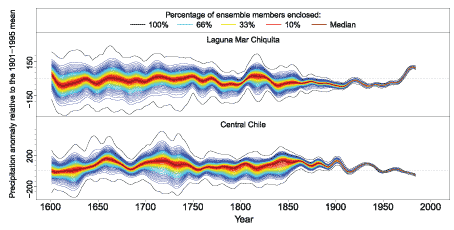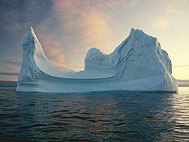| SEARCH |
-

Nov 17, 2015
Reflections on a three-decade legacy
The International Geosphere-Biosphere Programme (IGBP) will come to a close at t...
-
Nov 17, 2015
Use of and access to content on this website
Text and images produced by IGBP in house are free to use with appropriate credi...
-
Nov 12, 2015
Bella Gaia performance and panel discussion to mark IGBP's closure
A musical performance by Bella Gaia will celebrate the achievements and legacy o...
-

Towards Future Earth:
evolution or revolution?
During its three decades of existence, the International Geosphere-Biosphere Pro...
-
A personal note on IGBP and the social sciences
Humans are an integral component of the Earth system as conceptualised by IGBP. João Morais recalls key milestones in IGBP’s engagement with the social sciences and offers some words of advice for Future Earth.
-
IGBP and Earth observation:
a co-evolution
The iconic images of Earth beamed back by the earliest spacecraft helped to galvanise interest in our planet’s environment. The subsequent evolution and development of satellites for Earth observation has been intricately linked with that of IGBP and other global-change research programmes, write Jack Kaye and Cat Downy .
-
Deltas at risk
Around 500 million people worldwide live on deltas, but many of the world's deltas are sinking due ...
-
Climate change: the state of the science
A new data visualization released on the first day of the plenary negotiations at the UNFCCC’s clima...
-
Climate Change:
the State of the Science
Videos now online from the Stockholm public forum to mark the launch of the IPCC's climate report, 2...

Climate variability in the southern hemisphere
Jürg Luterbacher is Professor for Physical Geography in the Department of Geography, Justus Liebig University of Giessen, Germany. E-mail: Juerg.Luterbacher@geogr.uni-giessen.de.
South America is an especially important landmass in the southern hemisphere, for it spans a range of climates that are influenced by multiple drivers such as the El Niño Southern Oscillation, Antarctic Climate and the high Andes, for example. Although proxies with good age control are sparse in tropical South America, the southern half of the continent provides many more proxies that we can use to infer past climatic fluctuations. Ice cores from Andean glaciers and ice fields, drilled at up to 6100 metres above sea level, record snow accumulation and the chemical composition of the atmosphere over time. Trees living up to 3500 years and growing at altitudes up to 5000 metres above sea level respond to variations in temperatures and/or drought, recording this information in the width of their annual growth rings. We derived additional information from lake and marine sediments. Furthermore, we used historical documents from the time of the Spanish colonisation, now stored in many different archives in Europe and the Americas, that report on agricultural yields and the climatic (and non-climatic) causes of yield fluctuations.
It is one thing to have proxy records, though, and another to pool together available information for specific locations and then infer the palaeoclimatic history of half a continent. In the area of investigation, proxies were not distributed evenly in space and time. Some proxies were more suited to estimating summer temperatures than winter ones. And some were actually from areas outside of southern South America but were known to have the same set of controls on their climate. All of this meant that we needed an elaborate statistical methodology to reconstruct the annual history of summer and winter temperatures, and of precipitation (rain and snow) of the region. We now have summer temperatures stretching back more than 1000 years. But winter temperatures could be reconstructed only for the past 300 years or so due to the more limited number of proxy data that resolve winter temperature conditions. We constructed summer and winter precipitation to the late 15th and late 16th centuries respectively.
Comparisons and contrasts
The new records now allow us to compare the climate evolution of both hemispheres, leading to some interesting observations. Consider the comparison between the summer and winter temperature trends for southern South America and Europe, for which seasonally resolved temperature reconstructions are available (Figure 1). During some periods, the summer temperatures in the two regions seem to have fluctuated quite synchronously, for example in the 17th and 20th centuries. This co-variation could arise from global controls such as changes in solar irradiation, large volcanic eruptions or decadal-scale changes in the behaviour of globally relevant climate phenomena such as the El Niño-Southern Oscillation. It could just as well be a chance phenomenon. Other periods do not show a synchronicity for summer temperatures, and the winter temperatures generally do not seem to vary in consort. It is likely that the effects of the global forcing mechanisms were superimposed with and perturbed by strong regional to hemispheric-scale influences during these periods. To pinpoint the causes of these variations, we will require reconstructions from other regions and climate-model simulations.



In contrast to the more muted warming, we find that in recent decades precipitation has changed substantially in some areas of southern South America. For example, the patterns of annual rainfall during the past four centuries in the catchment of the Laguna Mar Chiquita, a large lake in northern Argentina, are rather different from those in central Chile (Figure 2). In the former region, a large jump in rainfall amounts (an increase of more than 100 millimetres per year on average) occurred in the 1970s, signalling a shift from a relatively dry regime to the presently wet one. In contrast, central Chile currently suffers from a prolonged drying; modern conditions are probably drier than at any time over the last four centuries. In general, our data and analysis suggest that summers in many parts of southern South America have become progressively wetter, whereas winters have become drier.


We know that key historical events in this region may have coincided with changes in climate. Earlier work has shown, for example, that periods of warfare and migration to fortified sites in the Andean Altiplano in the 14th and 15th centuries coincided with and may have resulted from severe drought. Climate reconstructions of the sort discussed in this study can help provide a far more detailed context for these events. They also have implications for contemporary societies. The economies on both sides of the Andes are highly dependent on the fresh water that stems from the mountains for irrigation and hydropower generation. Recent changes in the total amount and the seasonal distribution of precipitation have significant consequences for these sectors. Our reconstructions show that such changes have occurred in the past and should be incorporated into future economic planning and adaptation strategies.
Climate-model simulations for the 21st century project up to 50 percent reduction in precipitation relative to the present day conditions, mainly in the central Chile area. In combination with future melting of Andean glaciers, this may lead to critical reductions in water availability, which may strongly affect agriculture, freshwater supply and hydropower generation in some areas. In the northern and southern parts of the study area, models project rather wetter conditions, which may benefit the agricultural sector in the highly populated area between Buenos Aires and Rio de Janeiro.
The southern hemisphere has not received the kind of attention from climate researchers that it deserves. Our research is the first to reconstruct the regional climate in any part of this hemisphere at a high temporal resolution. Although the results raise more questions than they answer at this stage, we hope they will provide a foundation for further regional studies in South America in particular and the southern hemisphere in general. More importantly, they are expected to refine our understanding of how and why climate changes at local and regional scales, and thereby guide our responses to future change.

http://www.pages.unibe.ch/science/last2millennia.html
References
Falvey M and Garreaud R (2009) Journal of Geophysical Research DOI:10.1029/2008JD010519.
Luterbacher J et al. (2007) Geophysical Research Letters, DOI: 10.1029/2007gl029951.
Neukom R et al. (2010) Climate Dynamics, DOI: 10.1007/s00382-010-0793-3.
Neukom R et al. (2010) Geophysical Research Letters, DOI: 10.1029/2010glo43680.
IGBP closed at the end of 2015. This website is no longer updated.
-

Global Change Magazine No. 84
This final issue of the magazine takes stock of IGBP’s scientific and institutional accomplishments as well as its contributions to policy and capacity building. It features interviews of several past...
-

Global Change Magazine No. 83
This issue features a special section on carbon. You can read about peak greenhouse-gas emissions in China, the mitigation of black carbon emissions and the effect of the 2010-2011 La Niña event on gl...
-
INTERGOVERNMENTAL PANEL ON CLIMATE CHANGE:
How green is my future?
UN panel foresees big growth in renewable energy, but policies will dictate just how big.
-
UK:
'The Anthropocene: a new epoch of geological time?'
Royal Society, Philosphical Transactions A






















